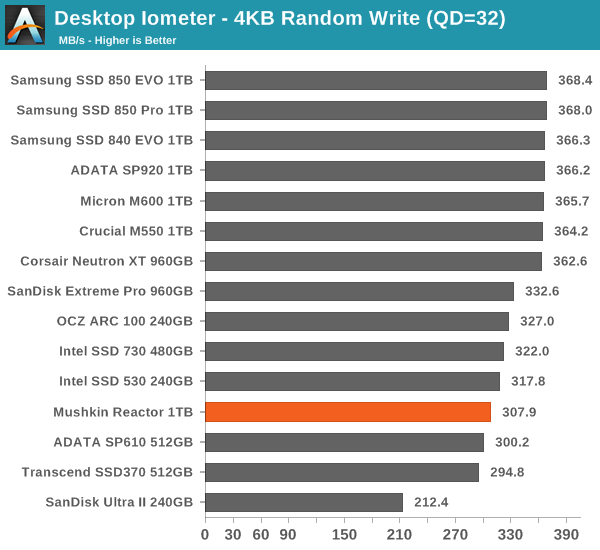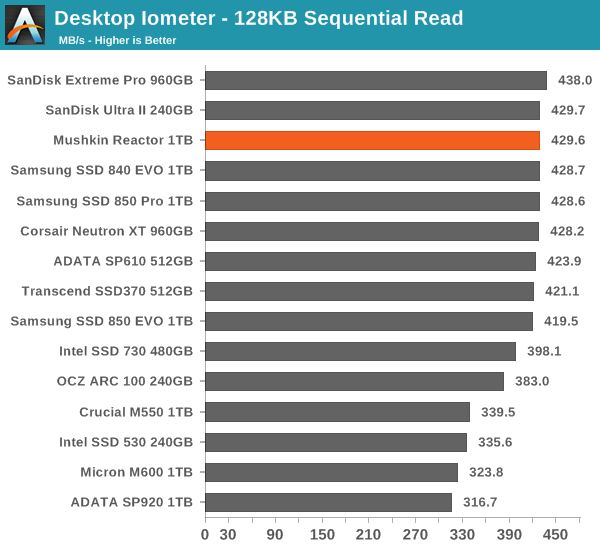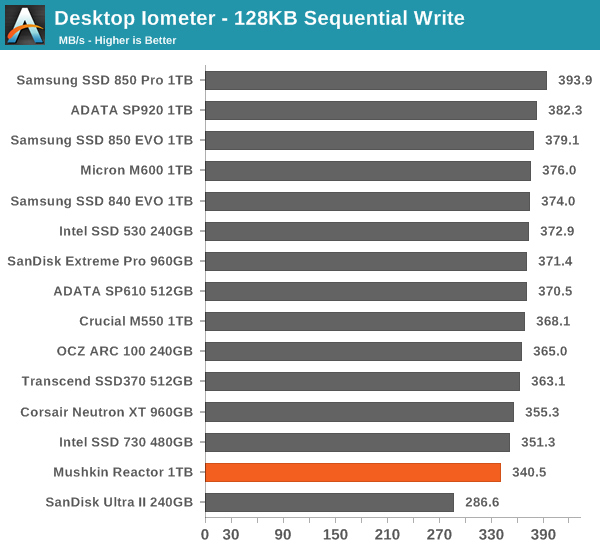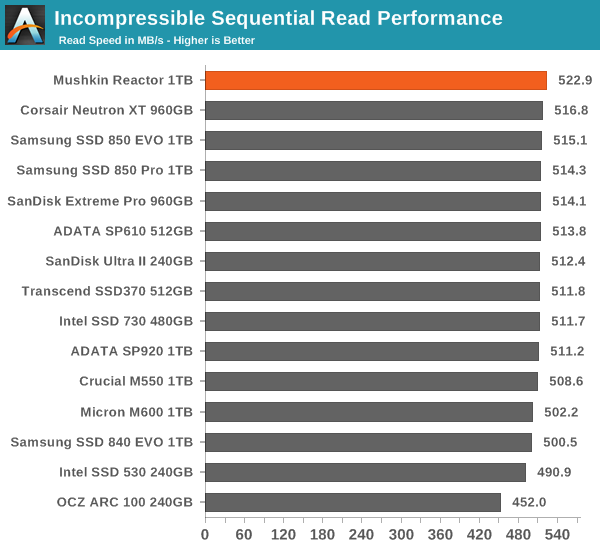Mushkin Reactor 1TB SSD Review
by Kristian Vättö on February 9, 2015 11:32 AM EST- Posted in
- Storage
- SSDs
- Mushkin
- Silicon Motion
- SM2246EN
- Reactor
- Micron 16nm
Random Read/Write Speed
The four corners of SSD performance are as follows: random read, random write, sequential read and sequential write speed. Random accesses are generally small in size, while sequential accesses tend to be larger and thus we have the four Iometer tests we use in all of our reviews.
Our first test writes 4KB in a completely random pattern over an 8GB space of the drive to simulate the sort of random access that you'd see on an OS drive (even this is more stressful than a normal desktop user would see). We perform three concurrent IOs and run the test for 3 minutes. The results reported are in average MB/s over the entire time.



Random performance is typical to SM2246EN, which isn't bad but there are drives with better peak performance.
Sequential Read/Write Speed
To measure sequential performance we run a 1 minute long 128KB sequential test over the entire span of the drive at a queue depth of 1. The results reported are in average MB/s over the entire test length.

Sequential write performance is a bit lower compared to the rest of the SM2246EN based SSD, which I suspect is due to the additional capacity and the increased LBA tracking due to that.

AS-SSD Incompressible Sequential Read/Write Performance
The AS-SSD sequential benchmark uses incompressible data for all of its transfers. The result is a pretty big reduction in sequential write speed on SandForce based controllers, but most other controllers are unaffected.












69 Comments
View All Comments
Shadowmaster625 - Friday, February 13, 2015 - link
That's because SSDs are old and antiquated. NAND should be right on the DIMMs with DRAM, sharing the same bus, the same memory controller, as much of the same hardware as possbile. It should have started 3 years ago and by now we should have had 4GB DRAM + 64GB NAND DIMMs for $120 a pair and 8GB + 128GB for $200 a pair.akrobet - Monday, February 9, 2015 - link
What is holding back the adoption of NVMe M.2 drives?AnnihilatorX - Monday, February 9, 2015 - link
I think: Lack of Chipset support, require most recent OSes, lack of boot support, competing standards -> general consumer confusion (SATA Express vs M.2), Rarity of motherboards with M.2, cost.There is not one specific reason holding back, but I guess you can just say with all new tech adoption will be low at first, and this would be the explanation.
galta - Monday, February 9, 2015 - link
I boot with my Plextor M.2dgingeri - Monday, February 9, 2015 - link
The M6e doesn't do NVMe. It's AHCI, which restricts performance somewhat.BillyONeal - Monday, February 9, 2015 - link
The article says that you don't think the 850 EVO is worth 60 dollars more; but in the list they're the same price. Typo?Kristian Vättö - Monday, February 9, 2015 - link
Read the full sentence."That said, if the prices go up to $450 again, the Reactor will become a better choice because despite the performance and features I don't find the 850 EVO to be worth $60 more."
Kristian Vättö - Monday, February 9, 2015 - link
I also edited it to be more clear now.BillyONeal - Monday, February 9, 2015 - link
Makes sense. Thanks!Andy Chow - Monday, February 9, 2015 - link
A 1TB drive with 144 TB endurance? No thanks!